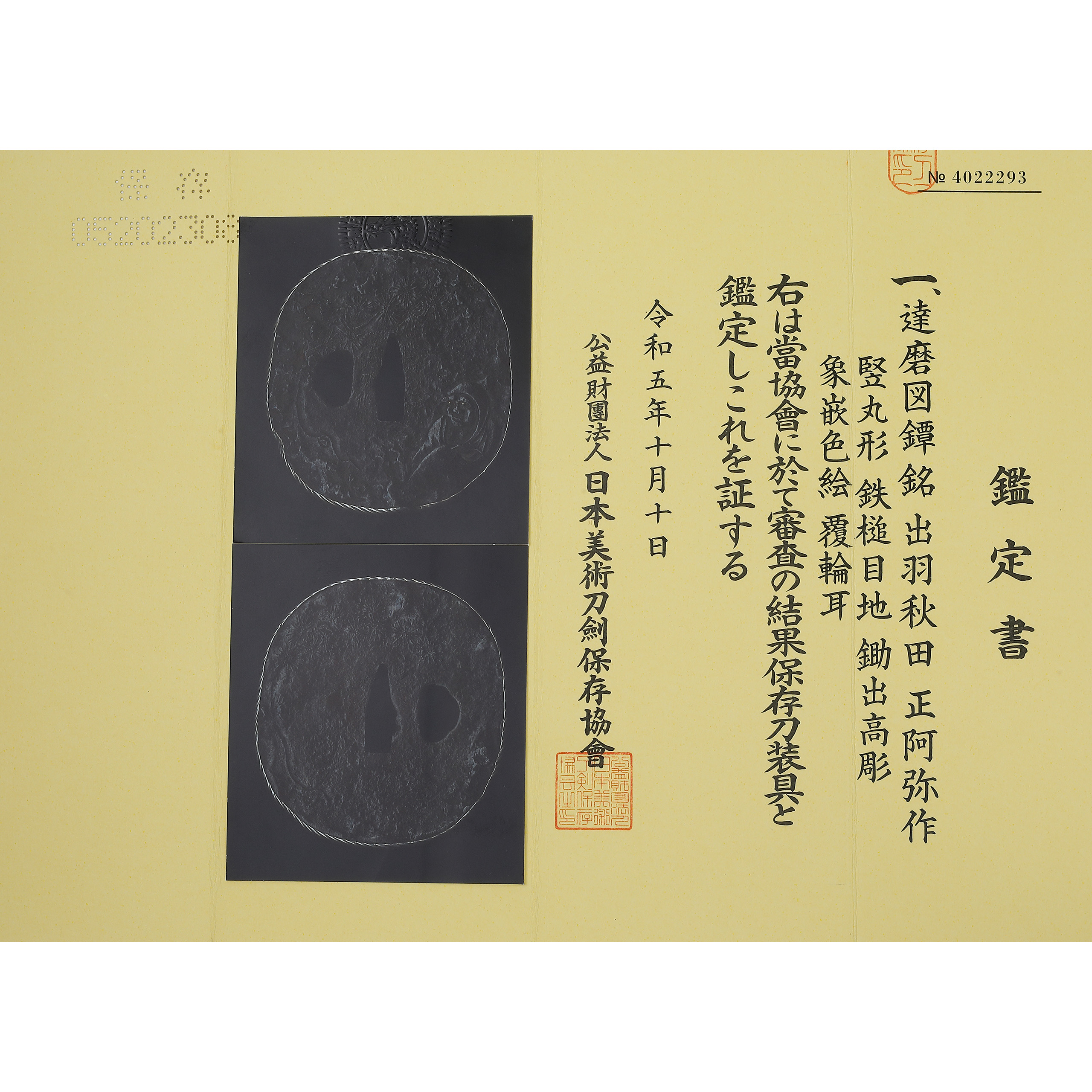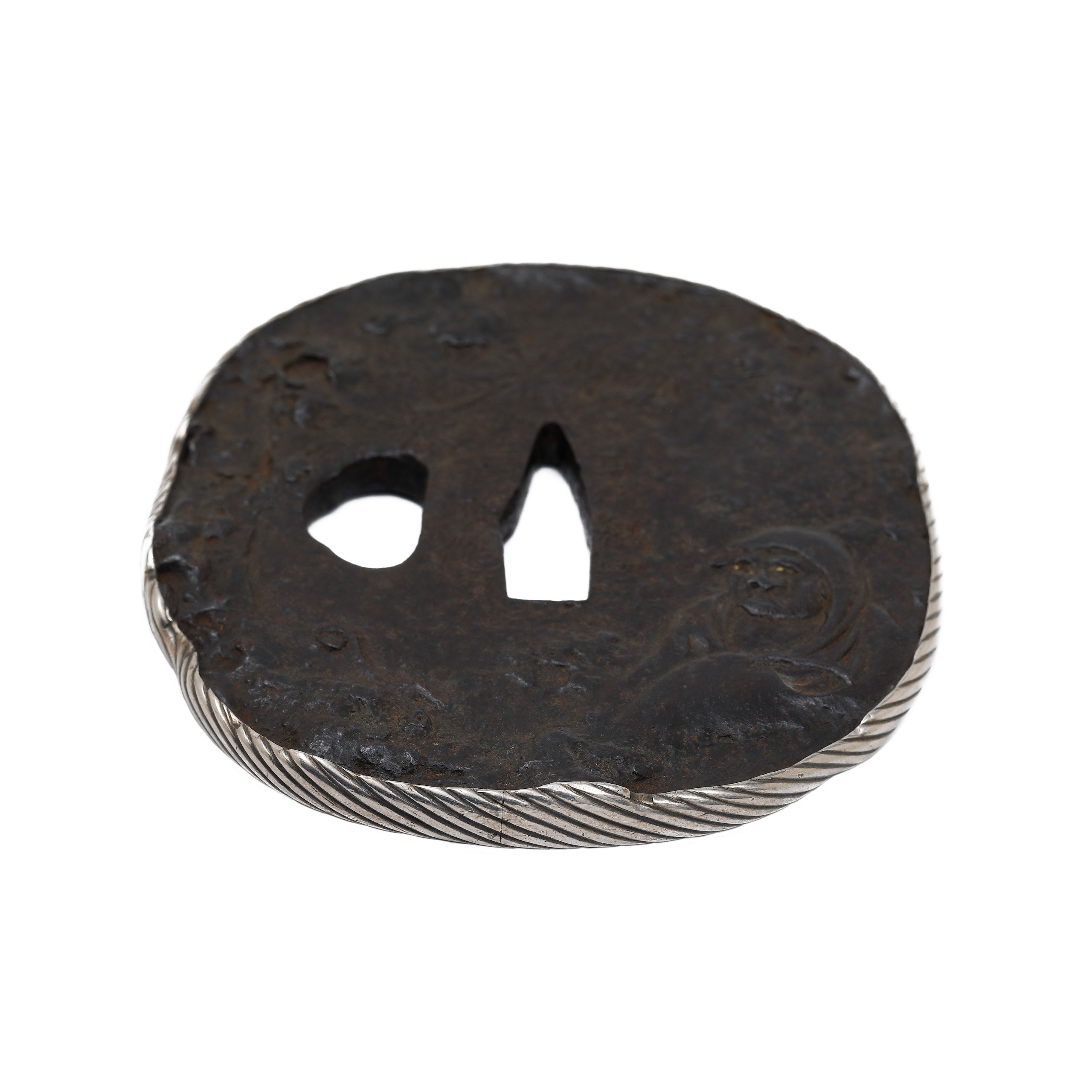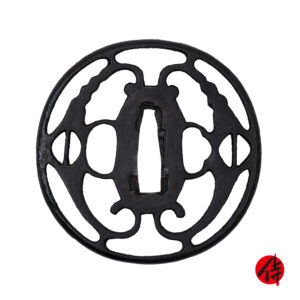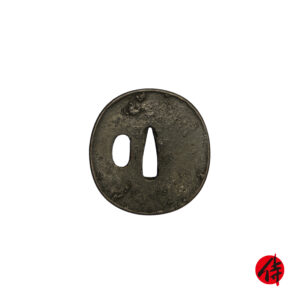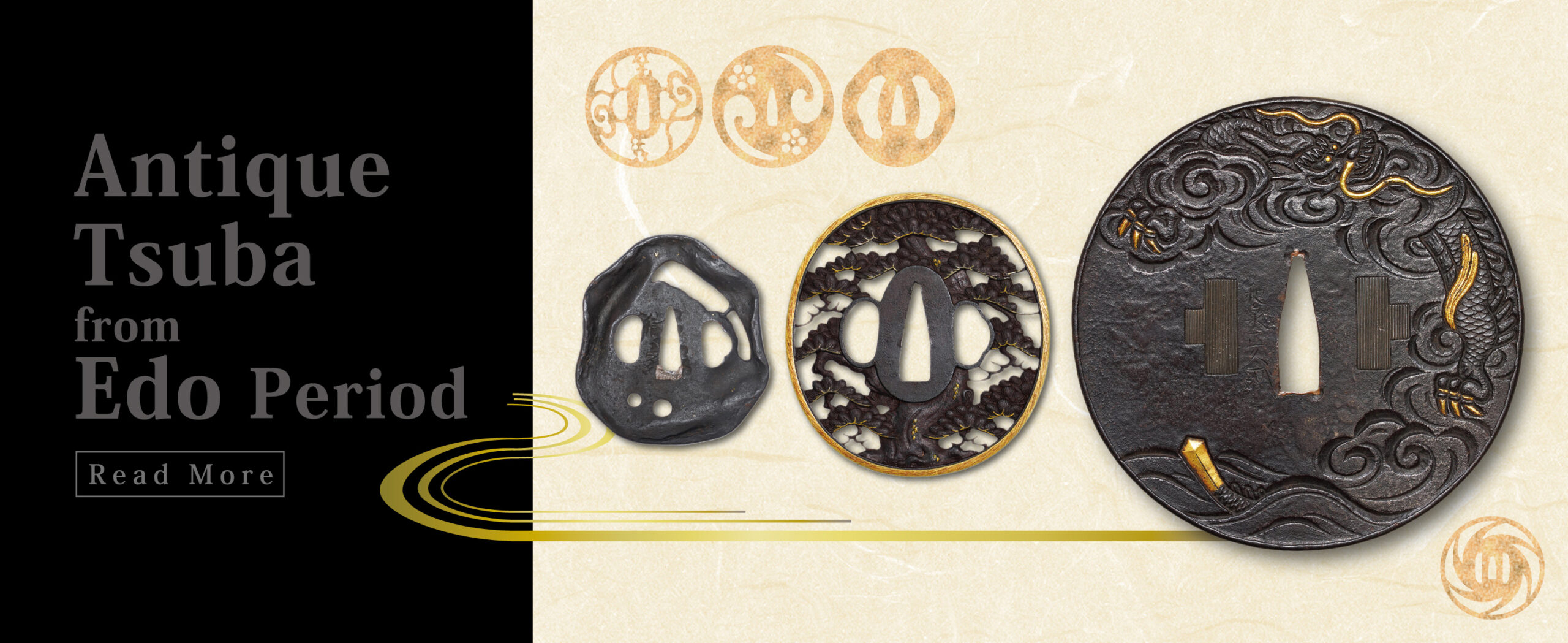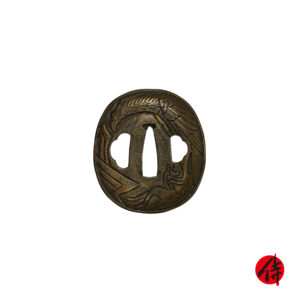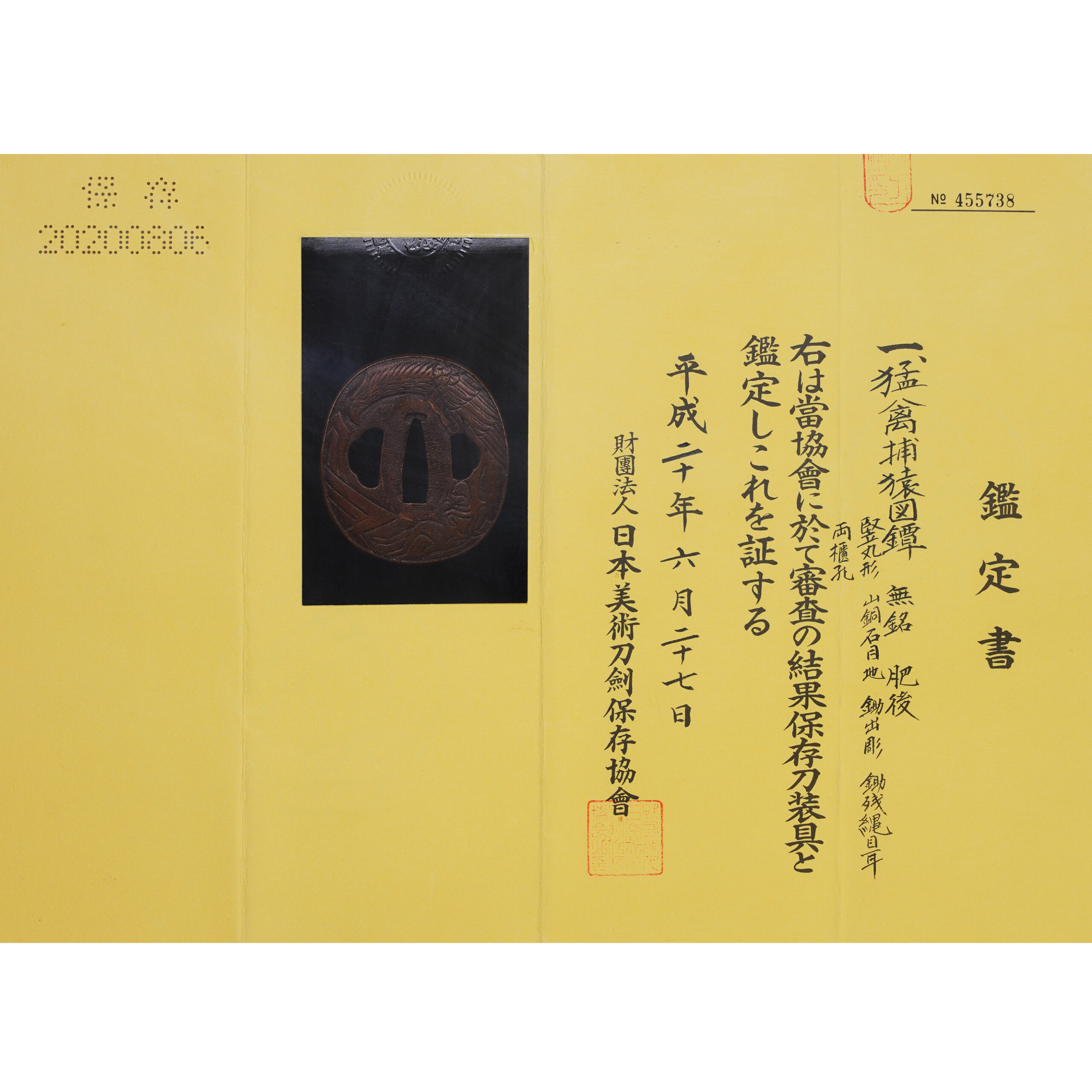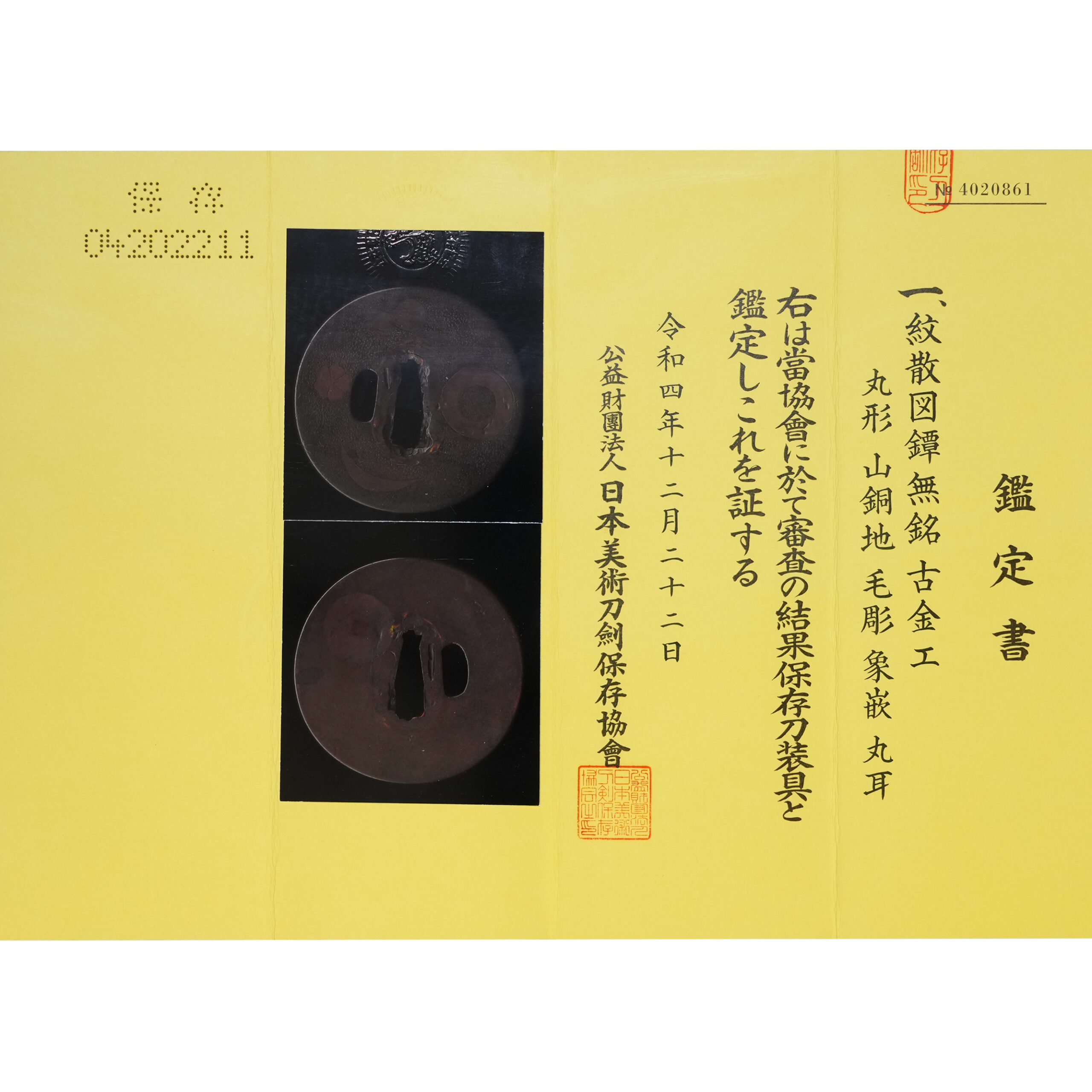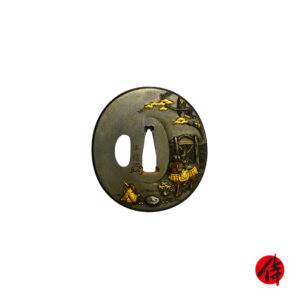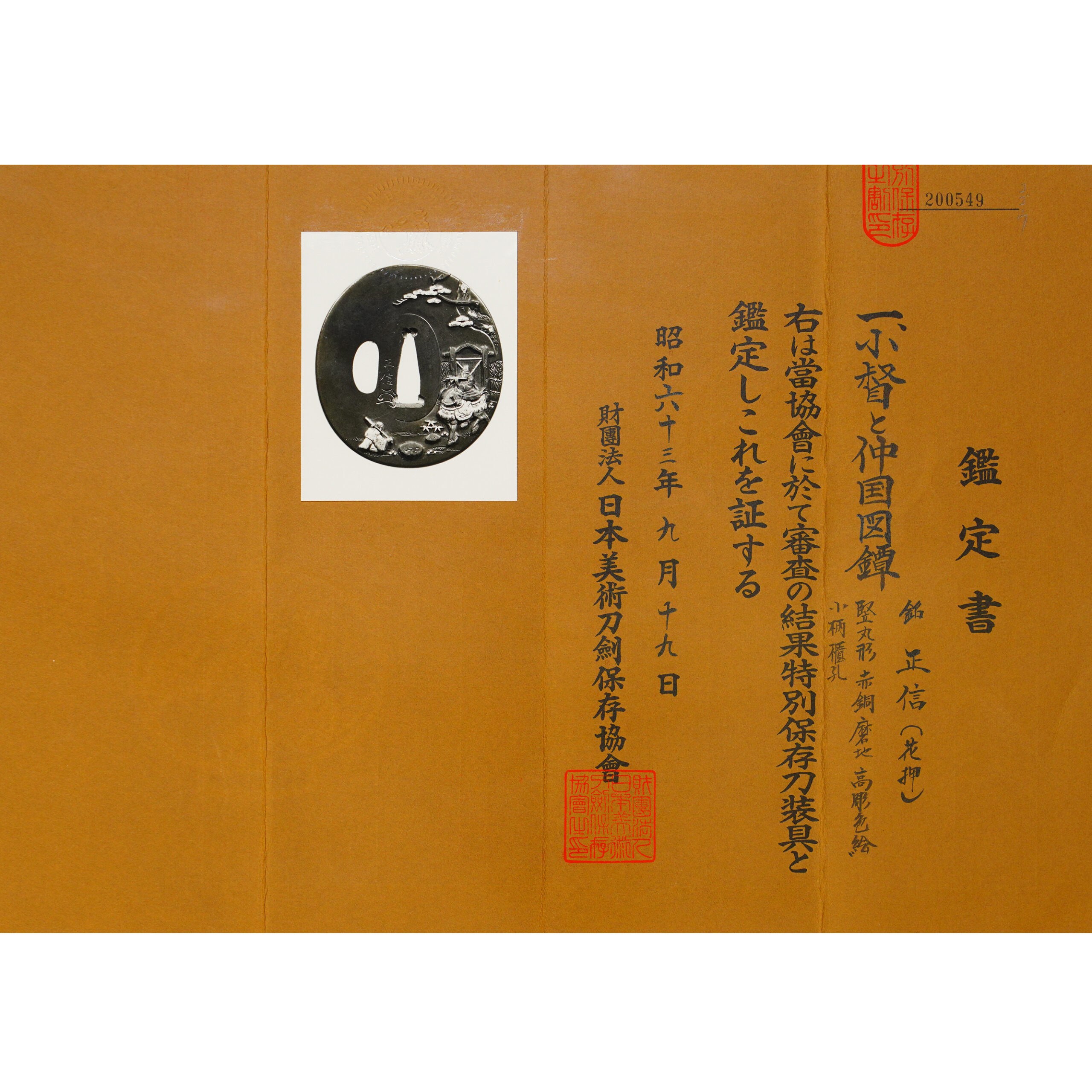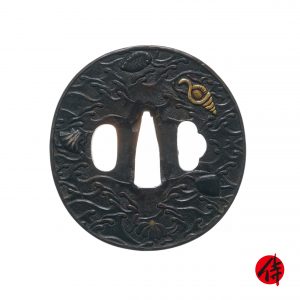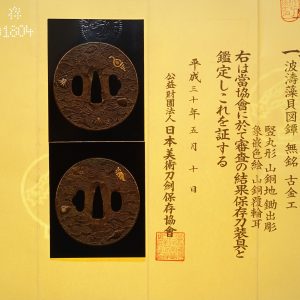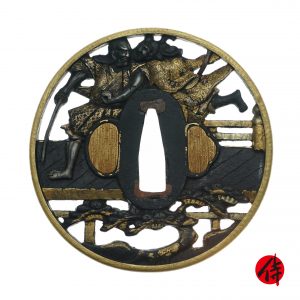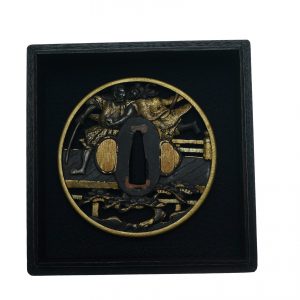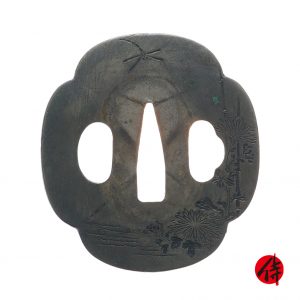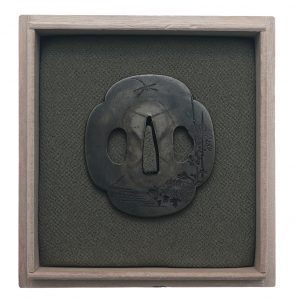Title: Dewa Akita-style, Daruma Zu Tsuba
Description
This Tsuba is recognized by The Society for Preservation of Japanese Art Swords, which is known as NBTHK. According to the certificate, this Tsuba was made by a Dewa Akita Shoami (出羽秋田正阿弥) school maker. It is said that the production of this style’s Tsubas was from the Muromachi period (1336-1573) to the Edo period. A theory says the Shoami school originated in Kyoto (京都) prefecture, and in various places and each era, there were many artisans who called themselves the Shoami school. The Akita (秋田) Shoami, the Aizu (会津) Shoami, and the Iyo (伊予) Shoami exceedingly prospered in this school. In other words, this Tsuba is one of the metalworks born in the area where Tsuba production flourished. This school was a prestigious family that served the Ashikaga (足利) Shogunate.
This Tsuba’s Mimi (耳, edge) is framed with a silvery metal plate. This decorative process is called the Fukurin (覆輪), and one of its purposes is to add beauty to works. In addition, it has practicality, such as preventing the wear of the edge part. Also, it prevents wear and tear on the Kimono (着物, traditional Japanese cloth) if the edge of a Tsuba damages it by touching the fabric.
Now, please focus on this Tsuba’s design. You would find the figure of a man. His pensive expression is impressive. His name is Daruma Daishi (達磨大師, 378-528), the founder of Chinese Zen (禅) Buddhism. He is famous for practicing zazen facing a wall. A theory says that his training was so severe that his limbs became so tired that they had to be cut off. He was sometimes beaten and had stones thrown at him by those who were jealous of his fame. However, he did not move in the slightest. One day, a stone was thrown at him in the face and caused him to lose a tooth.
Even though he was poisoned, he continued his training. He is often depicted with a scary face, but he is not glaring at others. He endured the pain of training so hard that his limbs were rotting, staring at his own heart that was about to give up. In this way, he studied his own heart and practiced against a wall for nine years, which is why call it Menpeki Kunen (面壁九年). He was born as the third son of a king in southern India. He encountered the teachings of Buddhism at the age of seven and practiced asceticism according to his master’s teachings. And then he moved to China when he was over 100 years old. He was a person who spread the teachings of Buddhism to many people until his death at the age of 150.
*As this item is an antique, please check each photo and ensure its condition.
What is Tsuba?
Tsuba is the hand-guard of the Japanese sword. High-class Samurai wore his Katana sword with its beautiful sword mountings such as Tsuba. Tsuba’s front design tends to be more decorative as this part was often seen by other Samurais when he was walking on the streets.
Why is it that the sword mounting was important for Samurai?
The sword mountings of the Japanese sword have many kinds of decorations such as handguards (Tsuba), sword hilt (Menuki), pommel (Fuchi Kashira). The Japanese sword worked as a weapon and as an object to show who he was. For example, it shows their personalities and beliefs. You could say that it is like decorations for smartphones today. We recommend you zoom in on the pictures of the sword fittings. When you do so, you can see the skill of Japanese metal engraving techniques. They are mainly made of iron and copper with inlays of gold, silver, and bronze. When it comes to handguard (Tsuba), each one has a different outline and weight. These sword fittings that have lived with Japanese swords of the same age might be worth as much as the Japanese swords. They are inconspicuous parts of the Japanese sword. Nevertheless, if you are knowledgeable or particular about it, you will become a connoisseur of the Samurai.
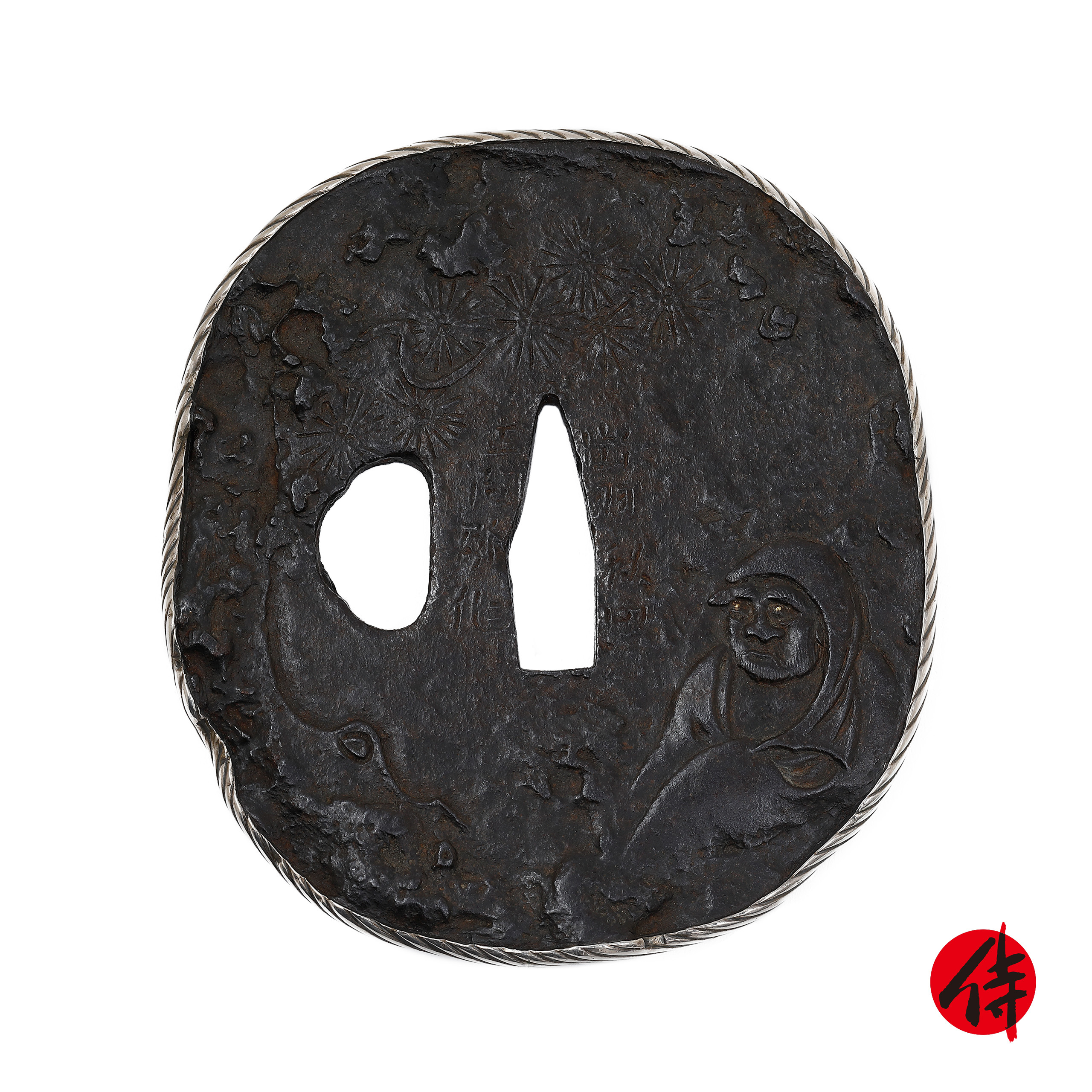


Authentication Paper: NBTHK Hozon Certificate
NBTHK, also known as Nihon Bijutsu Touken Hozon Kyokai (the Society for the Preservation of the Japan Art Sword), is one of the oldest Japanese sword appraising organizations in modern-day Japan. They authenticated the Tsuba on Oct 10th in the 5th year of Reiwa (2023). They appraised it as Hozon Tousougu, the Tsuba worth preserving for Japanese society. The purchaser will receive this original certificate as well. We can also translate what is written into English and make a PDF file for your record if you request.

【About us】
Samurai Museum is located in Tokyo, Japan, exhibiting antique artifacts related to the Samurai history. Samurai Museum Shop is the place for those who are interested in Japanese culture and craftsmanship. We deal with antique Samurai swords/armor, traditional crafts made in Japan and so on.
【Payment method】
We accept payment through Stripe (Credit card), PayPal, Apple Pay or ChromePay, all of which are secure payment methods. Also, you don’t need to make an account on Stripe for the checkout. If you prefer other payment method, please contact us. You may either pay in JPY, USD, AUD, CAD, EUR, CHF or GBP. The price is set in Japanese Yen. Prices in other currencies are automatically calculated based on the latest exchange rate.

【Shipping duration】
We normally ship via EMS (Express Mail Service) provided by Japan Post. It usually takes at least 5-14 days to deliver the package after you place an order. Time of delivery is estimated as accurately as possible by the carrier but does not take into account any delays beyond our control such as by inclement weather, post office holiday seasons.
We offer Free International Shipping as long as we can ship your order by EMS. If you prefer other shipping carriers, please contact us.
We will inform you of the order’s tracking number via email. Please make sure you fill out your valid email address correctly.
*If you like to make sure if EMS shipping is available to your country, please contact us.

【How to make sure the condition】
Please keep in mind that what you are going to purchase is an antique item. We uploaded high resolution photos for you to check its condition thoroughly. If you like to see more photos with different angles, please feel free to contact us. We will be happy to send them to you so that you can make informed decision.
It is essential for us to know that you are happy with your choice of Tsuba and we are prepared to use the best of our ability to serve you.
【How to appreciate Tsuba】
While Tsuba is a small component of Japanese sword mountings, we would say it is one of the most conspicuous parts. Also, unlike the blade itself, Tsuba has a low risk of handling. Furthermore, it does not require a large space for storage. Thus, Tsuba is relatively easy to collect. Here we would like to propose a few ways to enrich your Tsuba experience after purchasing your favorite Tsuba.
-Inspection
Inspect and feel the artistry of Tsuba. You will be amazed by the maker’s work quality to make it look a great work.
-Find the right place to display
Tsuba would look great when displayed in the best way. Find the best place in your house, your office, or anywhere you like, so that Tsuba would be appreciated as much as you like.
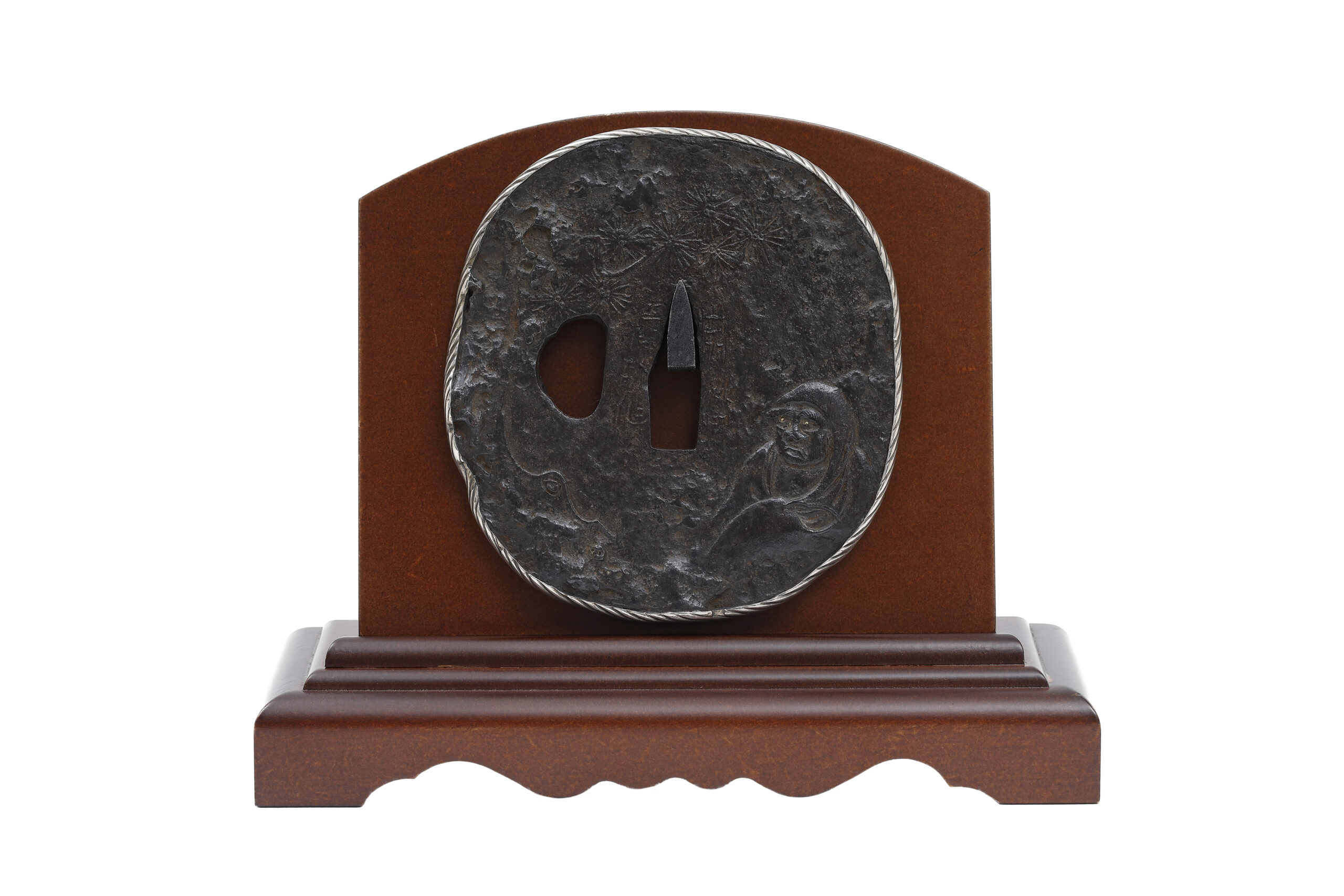
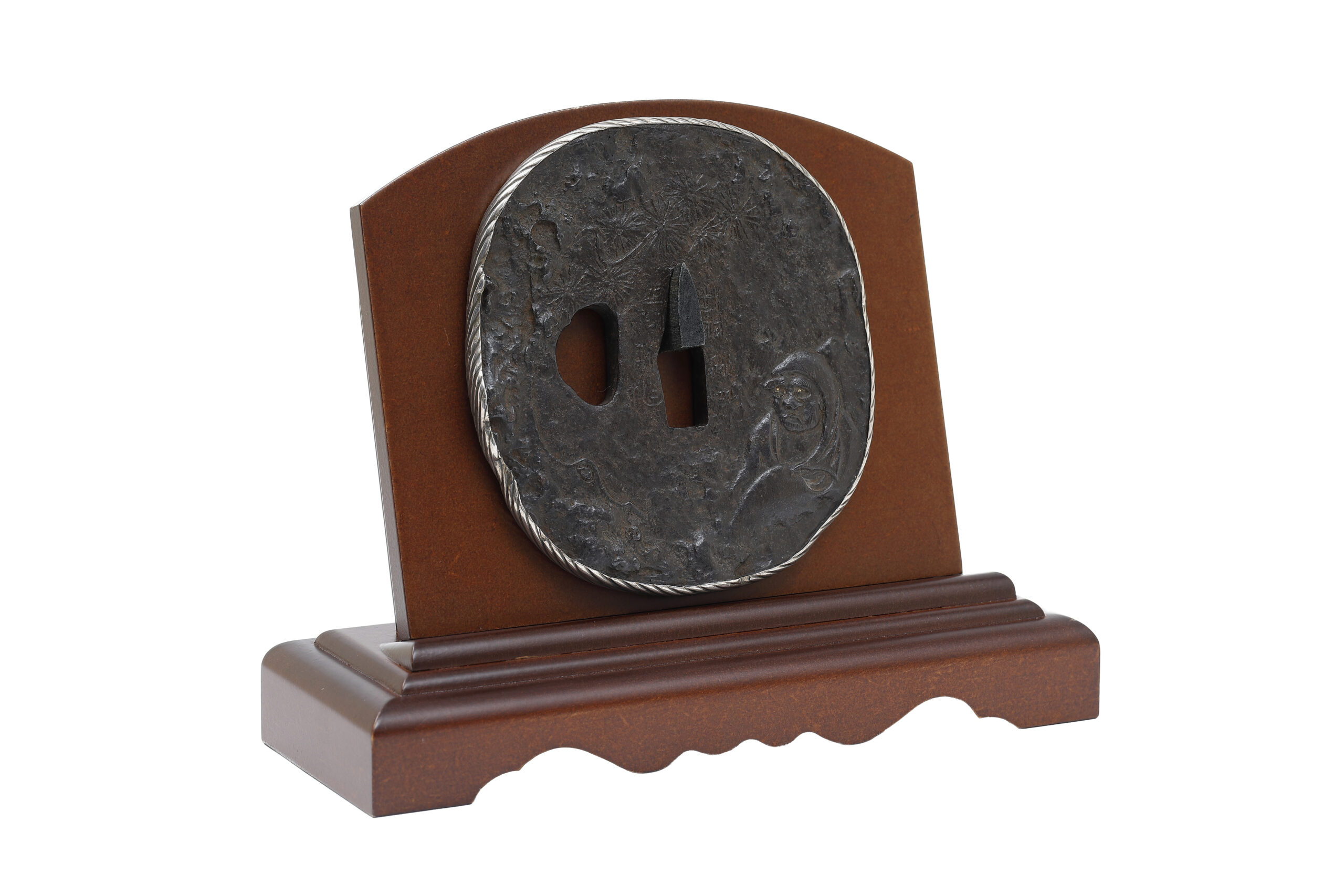
※These photos are the example of Tsuba stand and how to place the Tsuba.
-Learn the details
Tsuba reflects quite a lot of detailed features of its maker. Sometimes you can find the maker’s signature on Tsuba. Tsuba makers tried adding elaborate artistry to Tsuba. Many techniques were invented to achieve this goal, such as openworks, engravings, and gold/silver inlays. There were many schools that trained Tsuba creators, and each of them has different characteristics. You would enjoy knowing these differences and find your beloved style.
-Arrange in modern style
We want to propose to you the way that you could enjoy the Tsuba as jewelry. By stringing a cord into the center hole of the Tsuba, it could be worn as a necklace. This modern way would show you a new charm of Tsuba. Here are the examples of neckless.
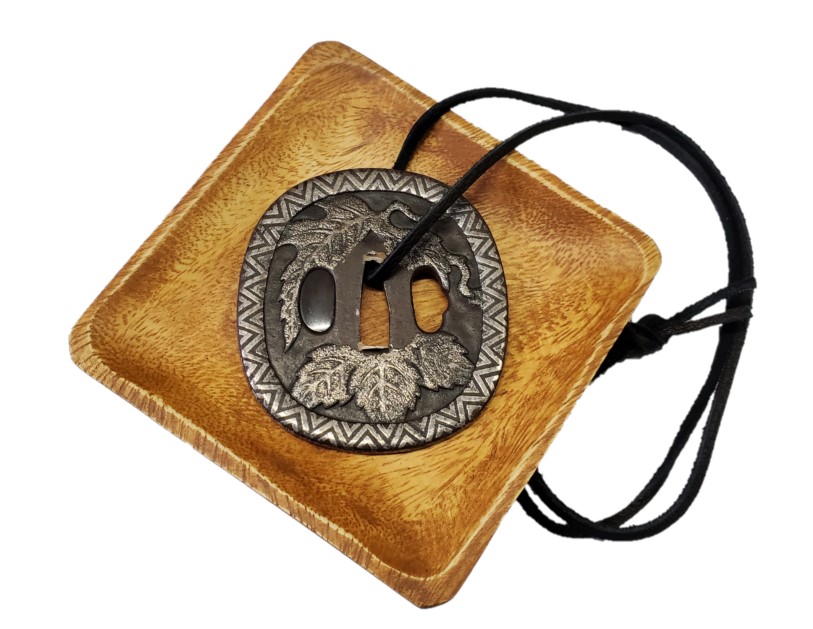
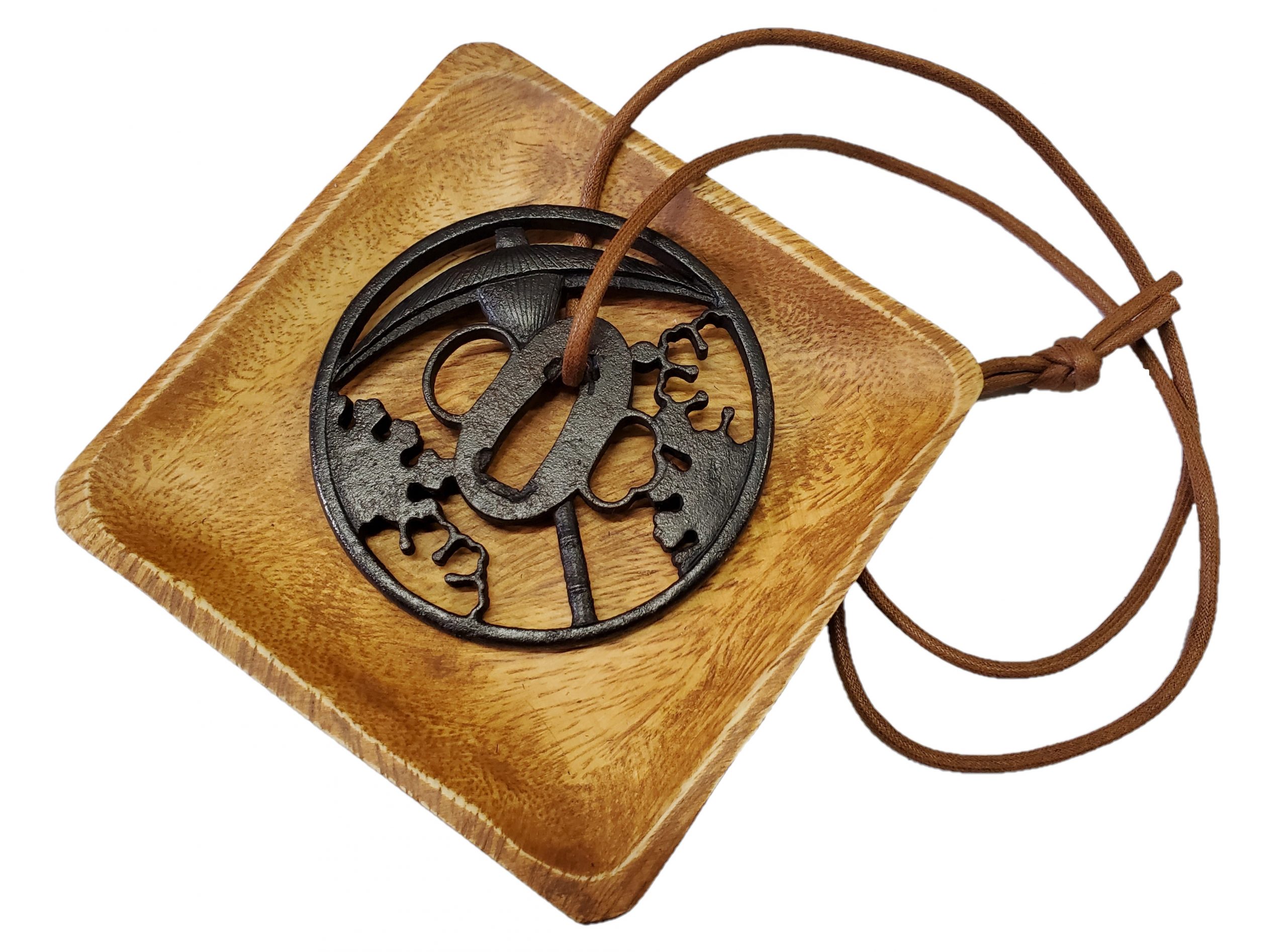
【Give the Tsuba as a special gift】
Are you looking for a special gift for a person who is interested in Japanese culture? We recommend you to give an antique Tsuba as a present for your significant other. Tsuba is an integral part of the Samurai sword, which was once a primary weapon for Samurai. Each Tsuba is a unique item and has a different design. We hope it would be a memorable gift. Now it is time for you to share the beauty of a piece of Samurai history with your family members or friends, for instance. Also, gift wrapping is available for Tsuba; it is for free. Here is an example of wrapping. For more information, please feel free to contact us. It is always our pleasure to serve you.
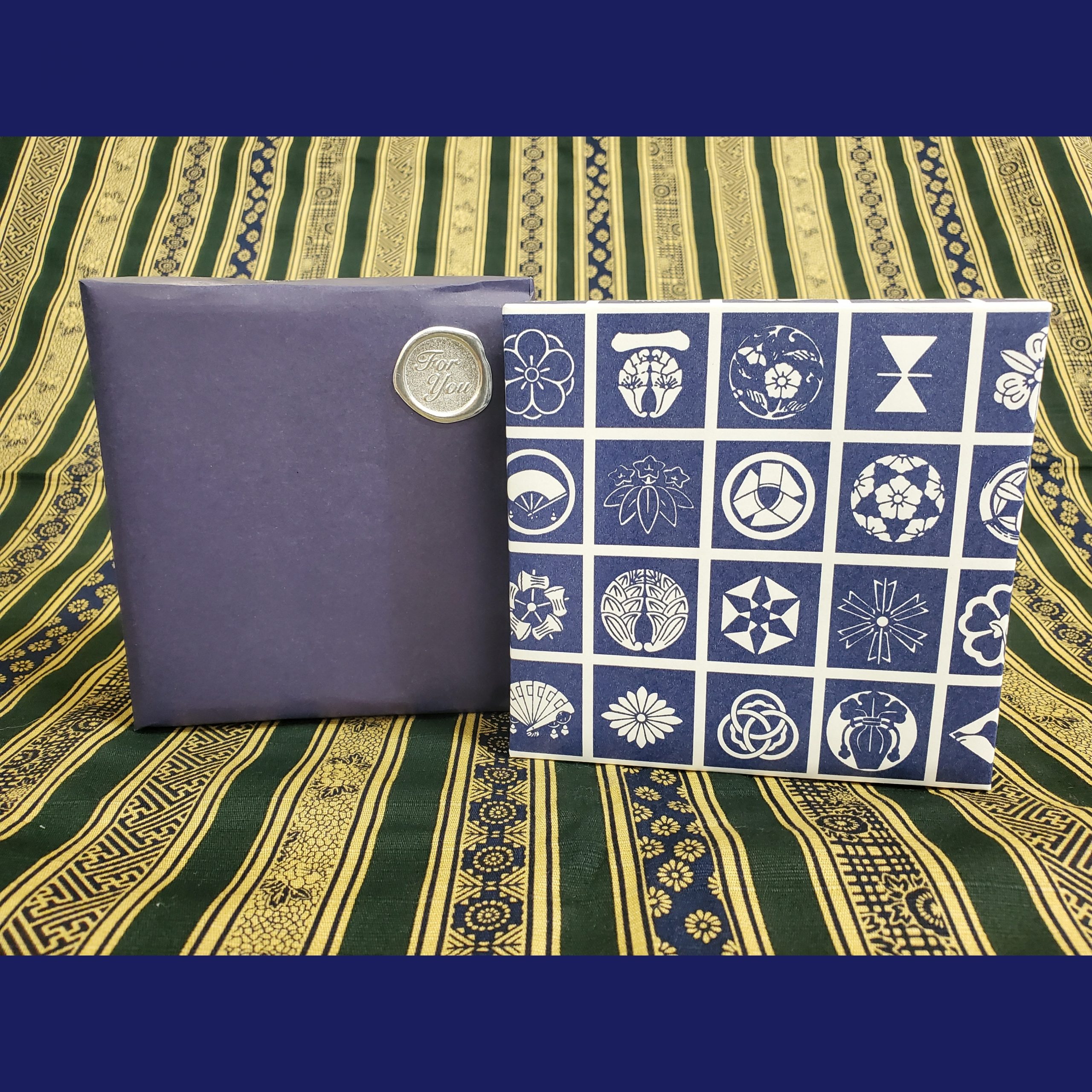
Would you like see some more Tsuba for sale? Please check the link below. We hope you can find your favorite Tsuba.
https://www.samuraimuseum.jp/shop/product-category/decorations/tsuba/
